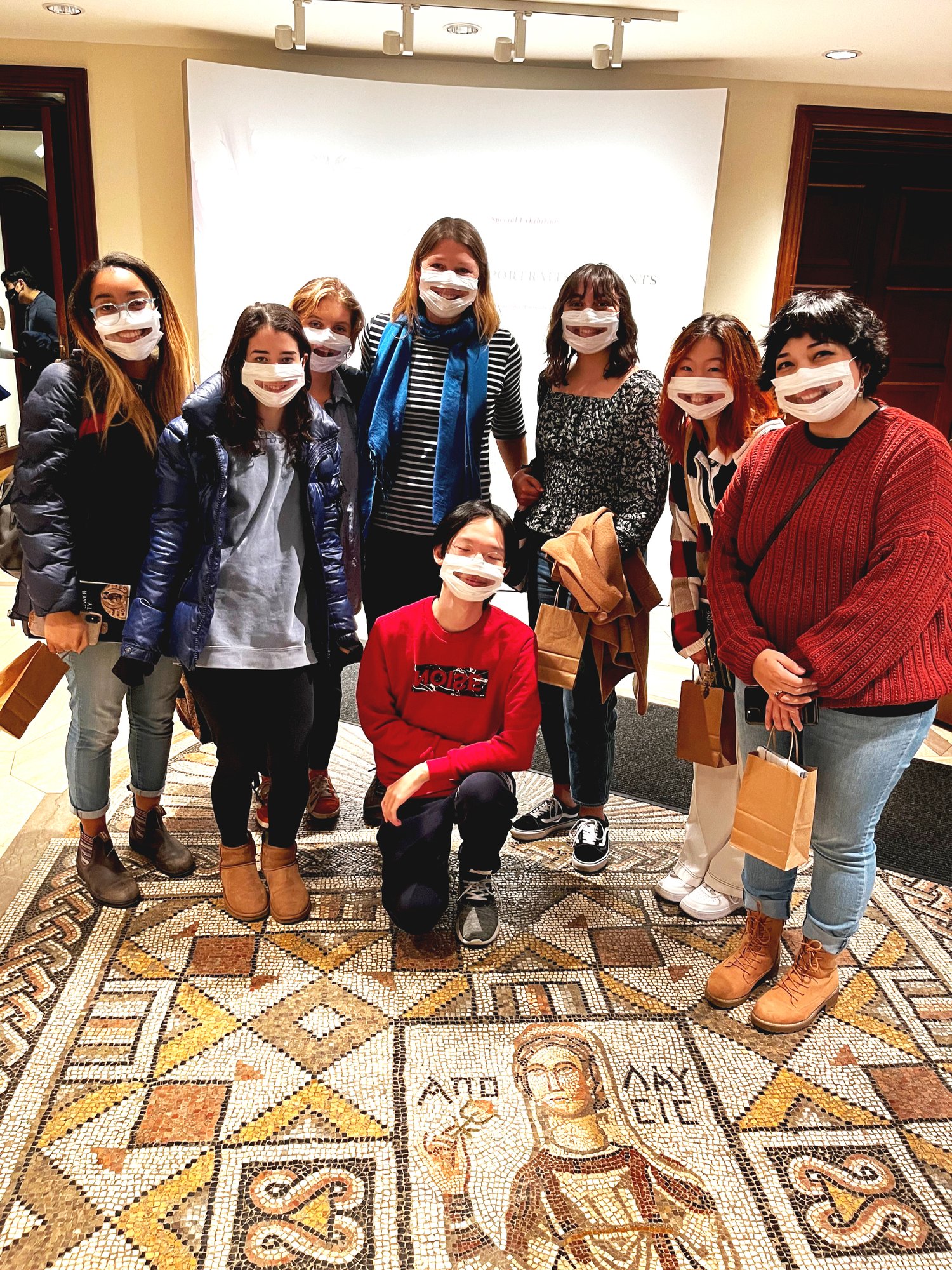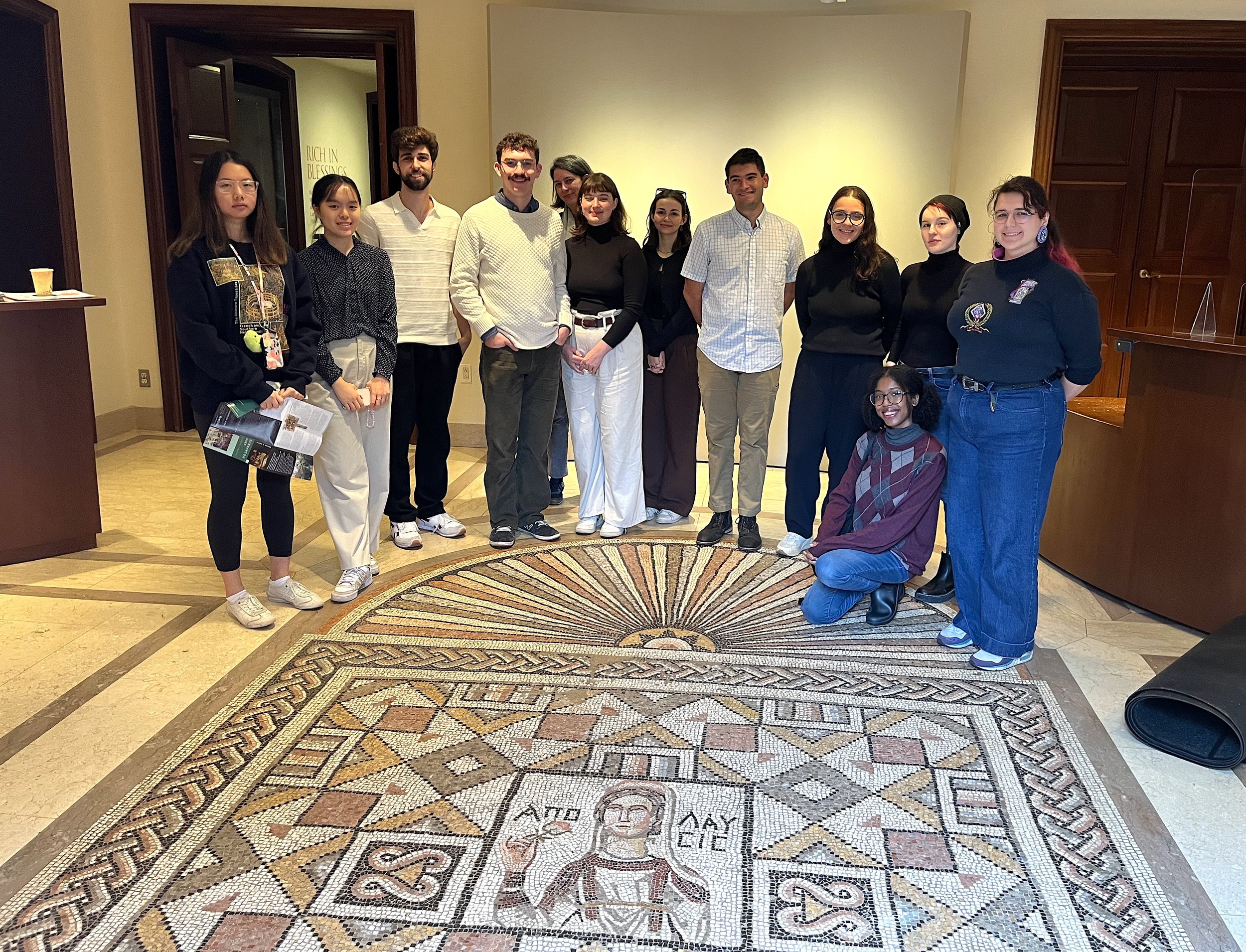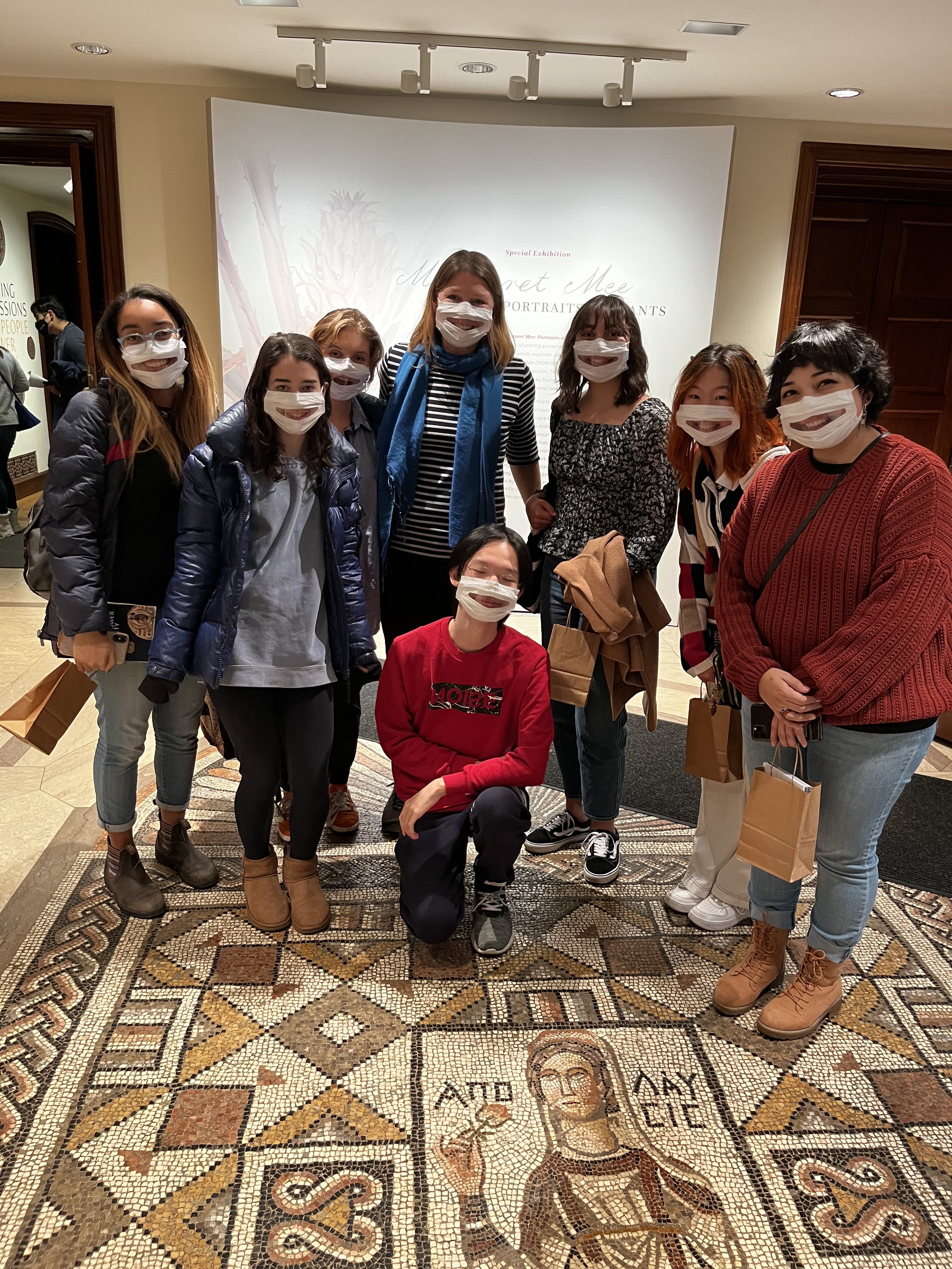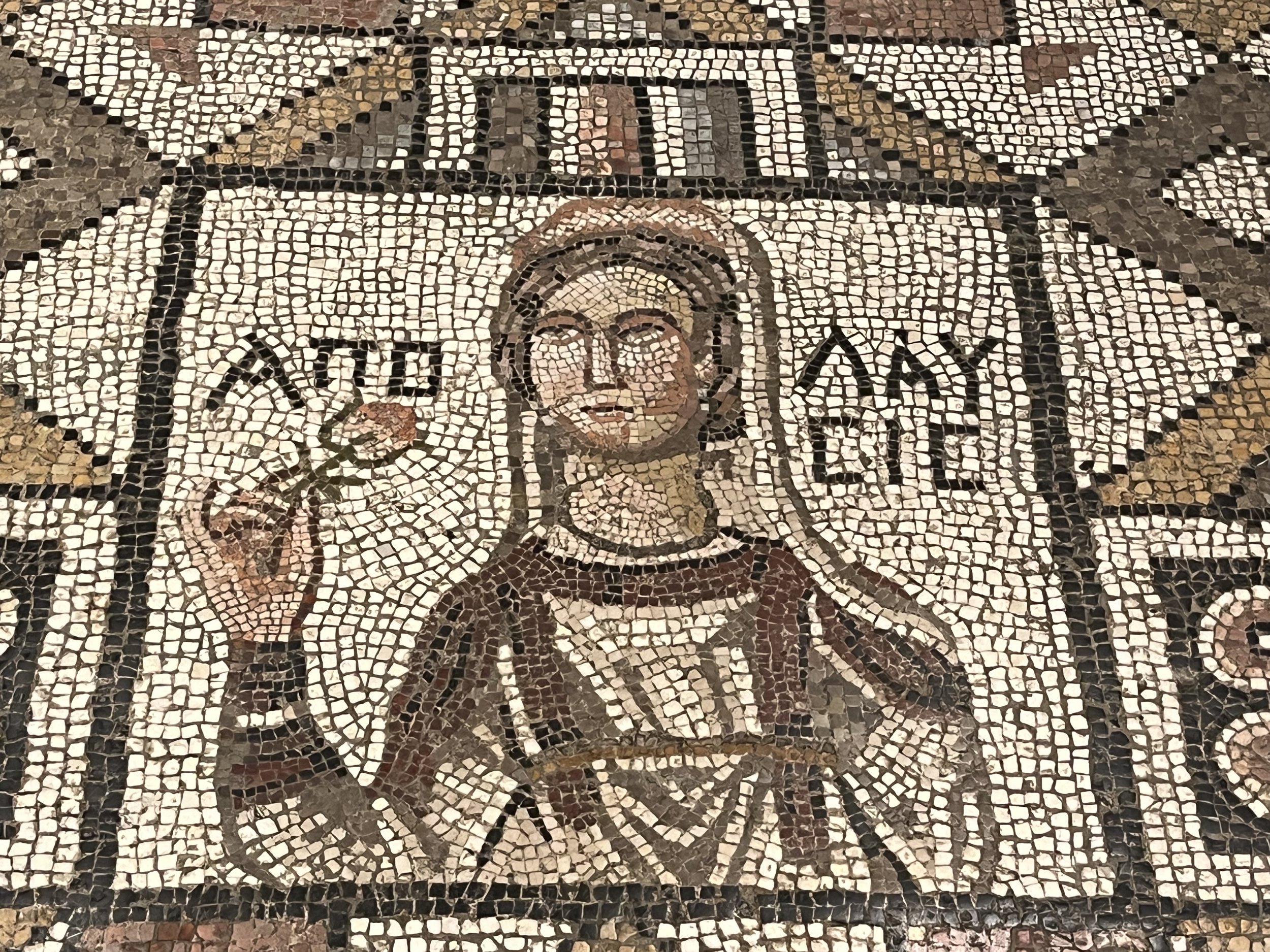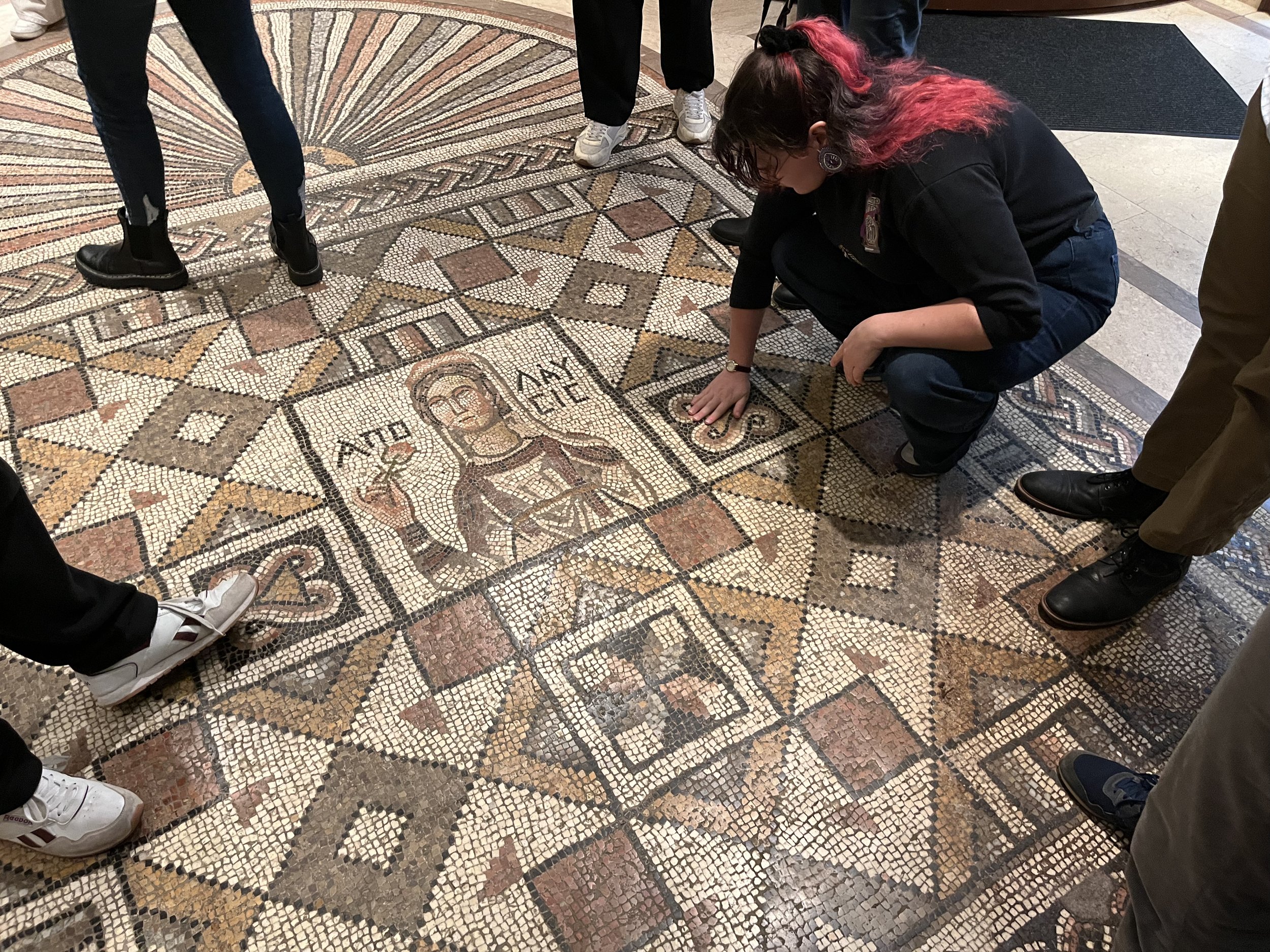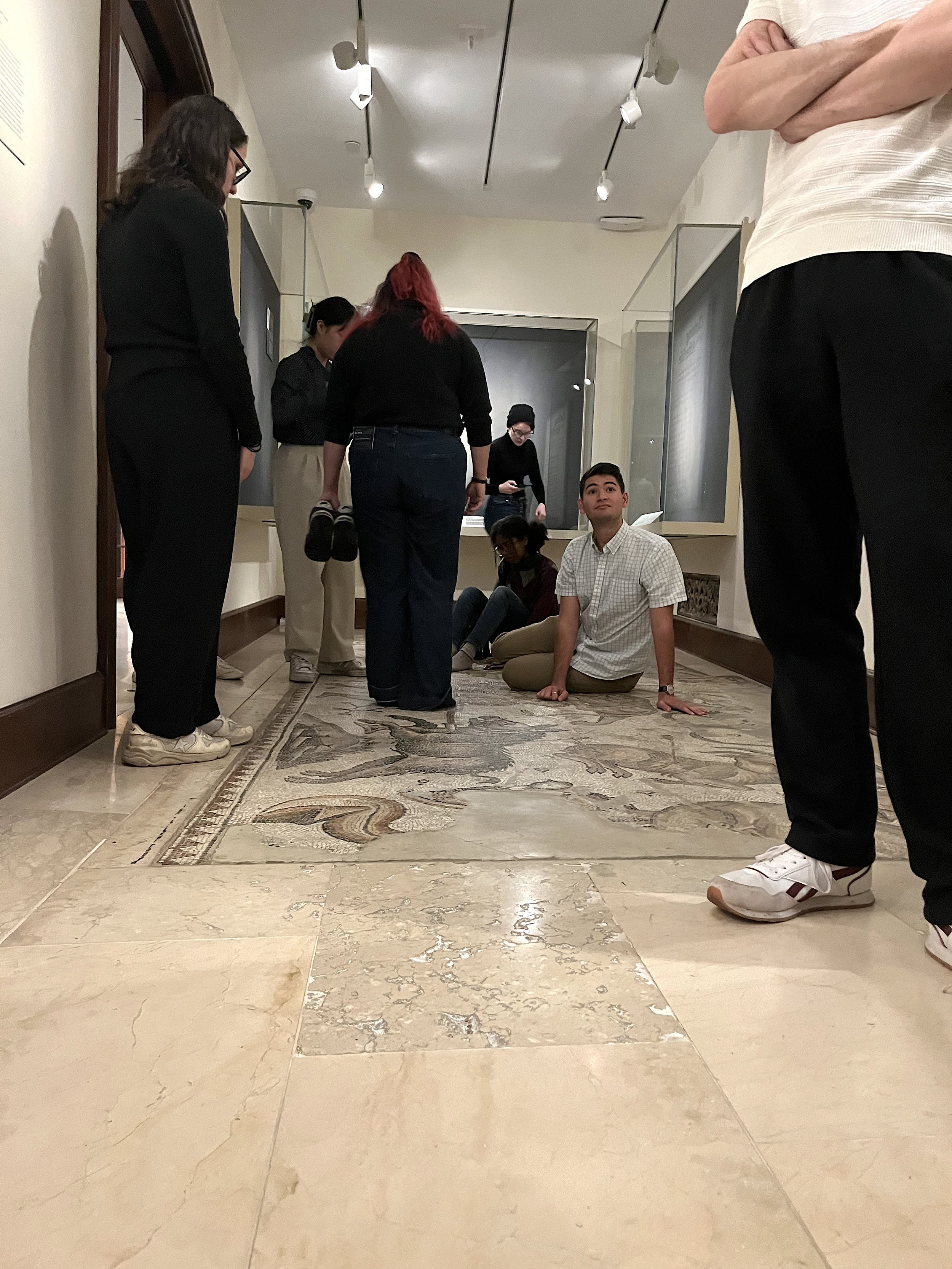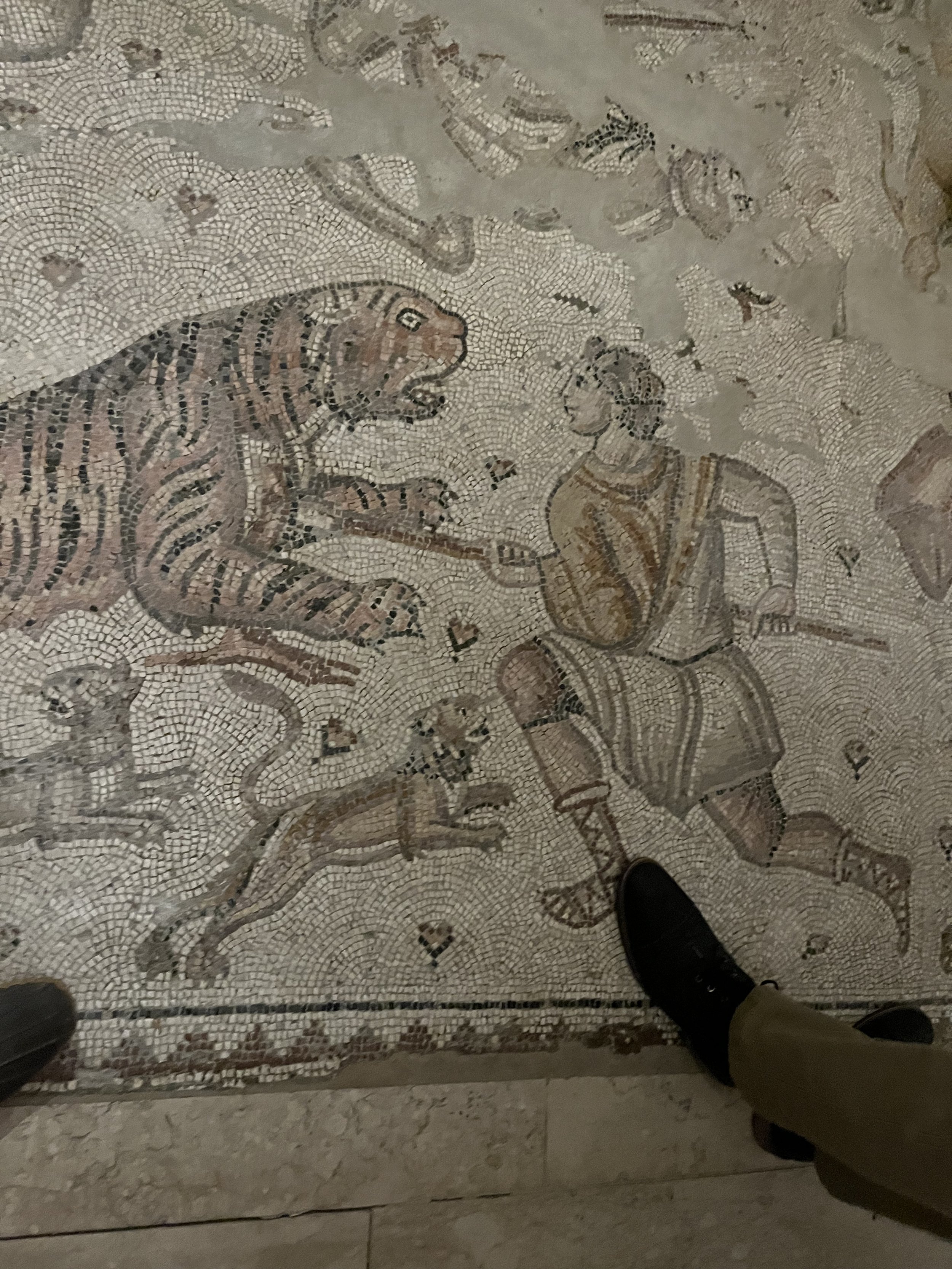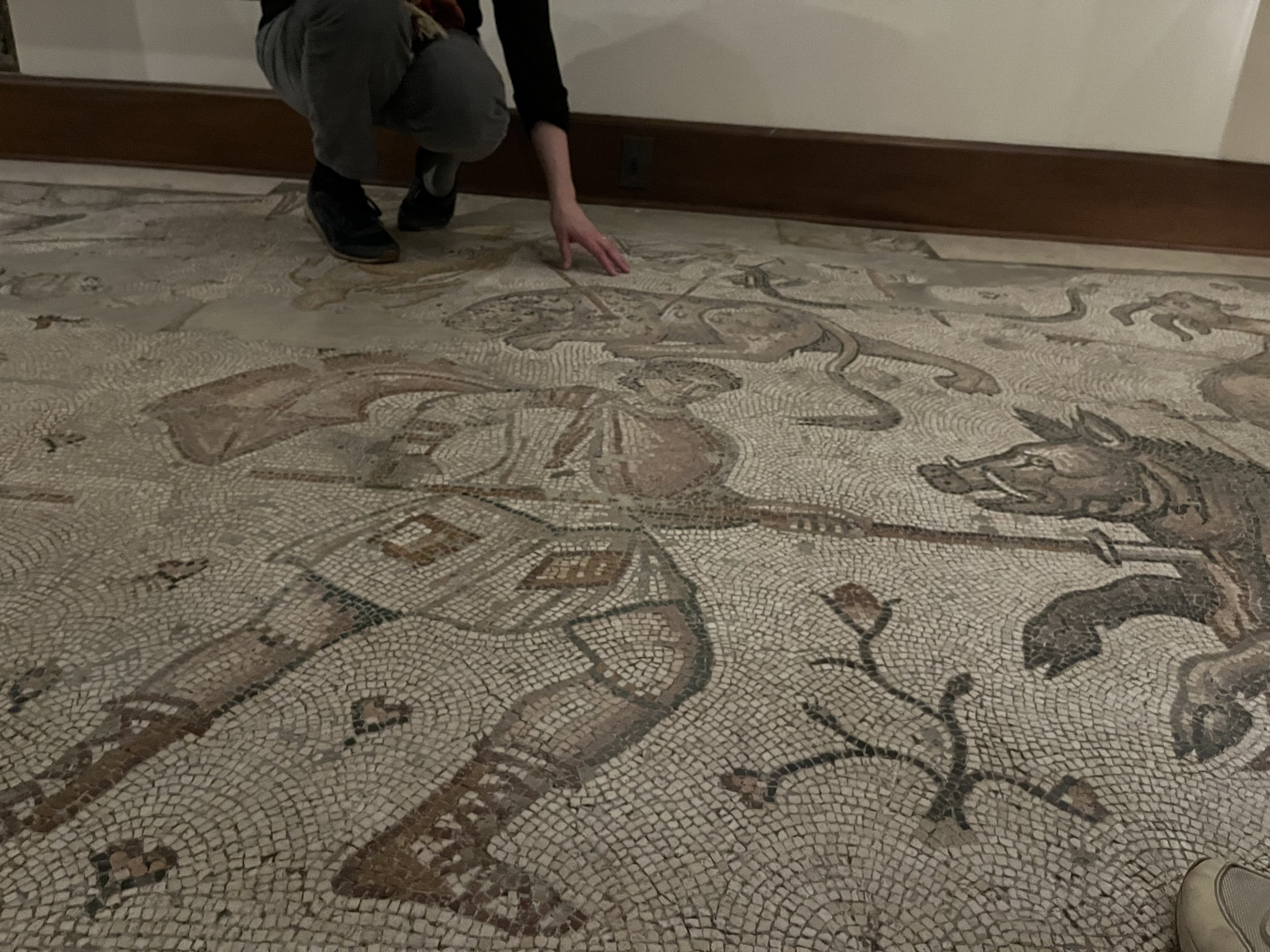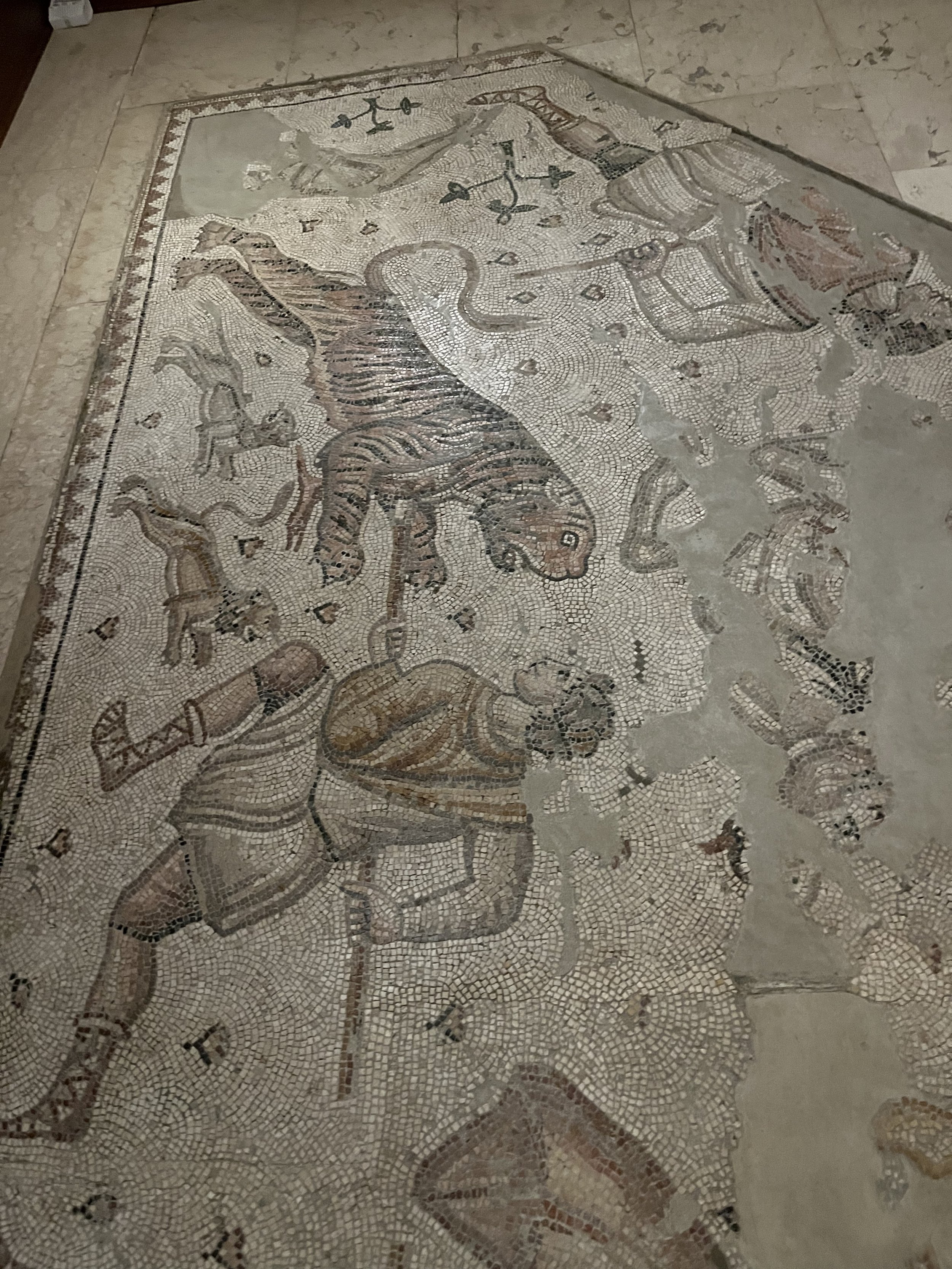ARP.3 to Dumbarton Oaks with Dr. Elizabeth Dospěl Williams
We recently traveled to DC to visit Dumbarton Oaks. Dr. Elizabeth Dospel Williams, Curator of Byzantine Art, met us to discuss the installation of the mosaic fragments—many of which are the museum’s gallery floors—and to take us through her stunning exhibition Rich in Blessings: Women, Wealth, and the Late Antique Household. This exhibition, installed in one of the central rooms of the museum and one in which a mosaic fragment is part of the permanent floor, creates a sense of how such floors would have been integrated into ancient houses and showcases the material dialogues between the mosaic floors and other media, such as hanging textiles, jewelry, and architectural elements.
Like all people entering and exiting Dumbarton Oaks, we stepped into the museum and onto the mosaic fragment picturing the personification of Apolausis (Enjoyment) with her rose. This was the same entrance that ARP.2 traversed in Fall 2021 (see below).
From L to R: ARP.3 with the Apolausis mosaic (Dec 23); ARP.2 with the Welcome (Apolausis) mosaic (Nov21); Detail of Personification of Welcome; Touching the tesserae of the Apolausis mosaic
The installation of these mosaic fragments as the gallery floors also affords visitors the chance to touch and feel the tesserae under foot, hand, and body and to experience the imagery differently than those fragments that have been mounted on the walls and cordoned off from touch. In particular, we explored the hunt fragment, noting the ways in which walking across and into the scene rendered us complicit in its dynamics of violent subjugation of animals by hunters. Walking on and into these scenes not only produces a less stable viewpoint due to the beholder’s movements, but it also takes them into the scene quite differently from imagery installed on a wall.
L to R: Exploring the hunt mosaic, walking into the hunt, touching the hunt, detail of a man piercing a tigress with her baby cubs below
We convened on the green carpet mosaic fragment, which marks the transition between the museum’s Byzantine and Ancient Americas sections. In Fall 2021 we conducted a series of small sound experiments on the green carpet fragment, while in Fall 2023 we focused on touch.
